The Visionary CEO’s Guide to Sustainability

At a Glance
- New research by Bain’s Global Consumer Lab has helped us understand consumers’ views on sustainability and how they are influencing buying behavior.
- Companies selling sustainability need to acknowledge and address a fragmented consumer base—not assume that developed-market or younger consumers are more concerned about the environment, for example.
- Different consumer segments define sustainability differently, and many make choices based on misconceptions.
- Companies tend to focus on technology adoption when devising strategic plans, but regulations and consumer behavior are moving just as quickly and have as big an impact.
This article is part of Bain’s 2023 CEO Sustainability Guide
To understand the important implications of climate change on consumer behavior, we surveyed more than 23,000 global consumers about a broad set of sustainability issues. We asked them what they care about now, what they know, and what they buy (and don’t buy). We followed that up with extensive conjoint analysis and ethnographic research, speaking directly to hundreds of consumers. The counterintuitive findings are relevant for consumer-facing businesses as diverse as brands, retailers, and airlines, as well as for business-to-business companies in everything from industrials to chemicals to packaging, whose customers ultimately sell to consumers.
Across markets and consumer segments, our research revealed dramatic—and unexpected—variations in consumers’ behavior and relationship to sustainability, and how their views are rewriting the rules for companies.
What we found
Worldwide, 64% of consumers reported high levels of concern about sustainability (see Figure 1). And that sentiment is increasing. The majority of these consumers told us that their worries have intensified over the past two years and that their concern was first prompted by extreme weather.
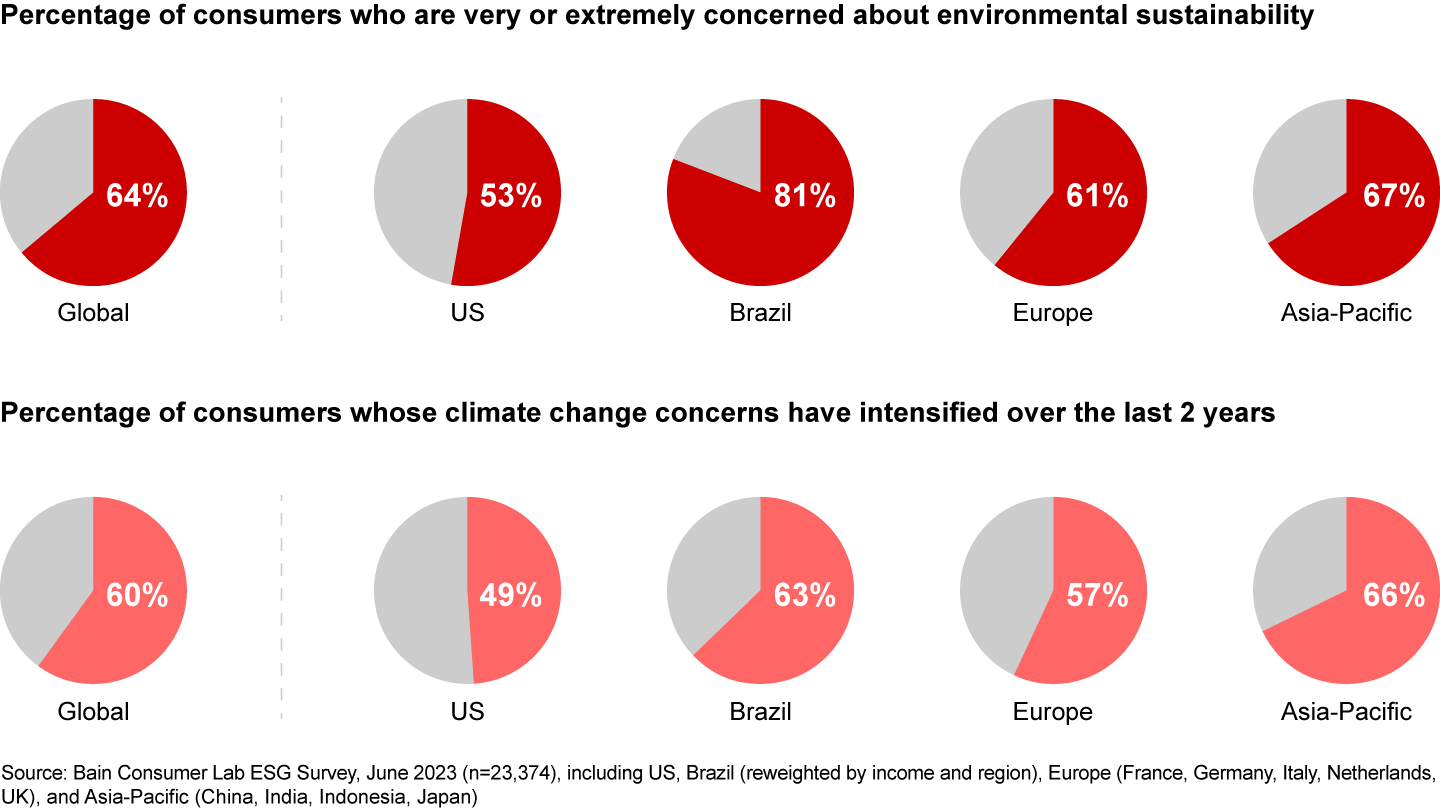
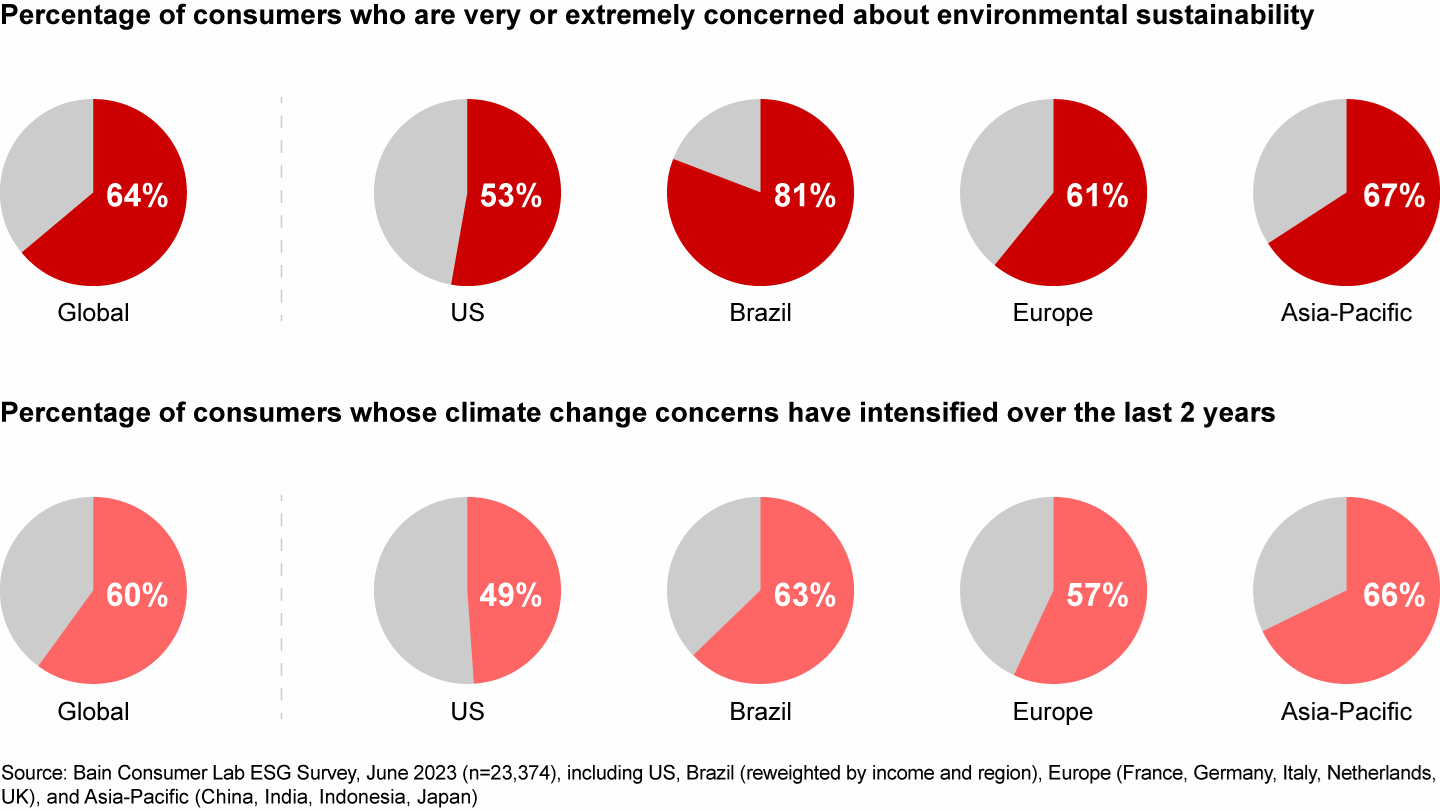
Our research found that 79% of consumers in fast-growing markets like China, India, and Indonesia are concerned about environmental sustainability, compared with 55% in developed markets like the US and Europe (see Figure 2).
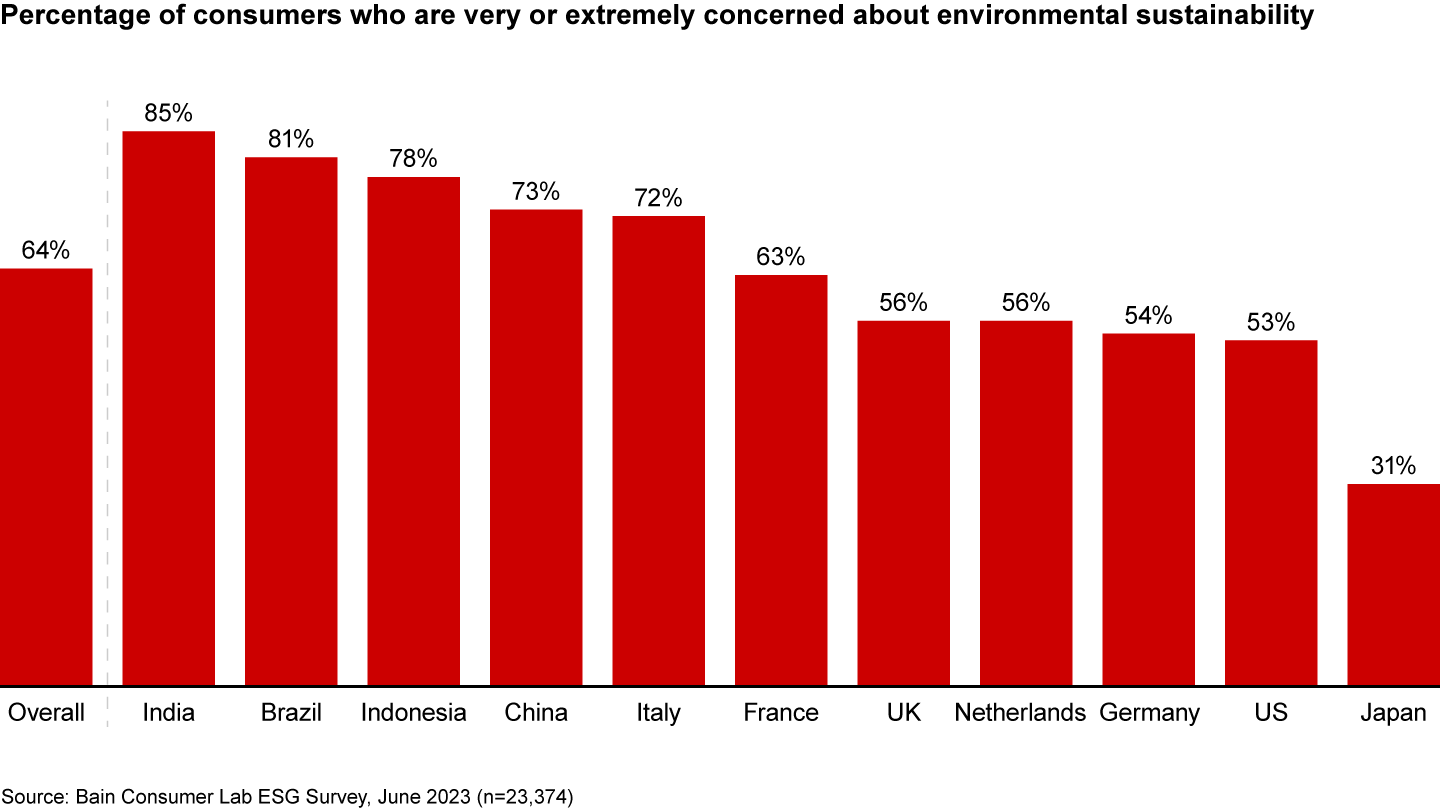
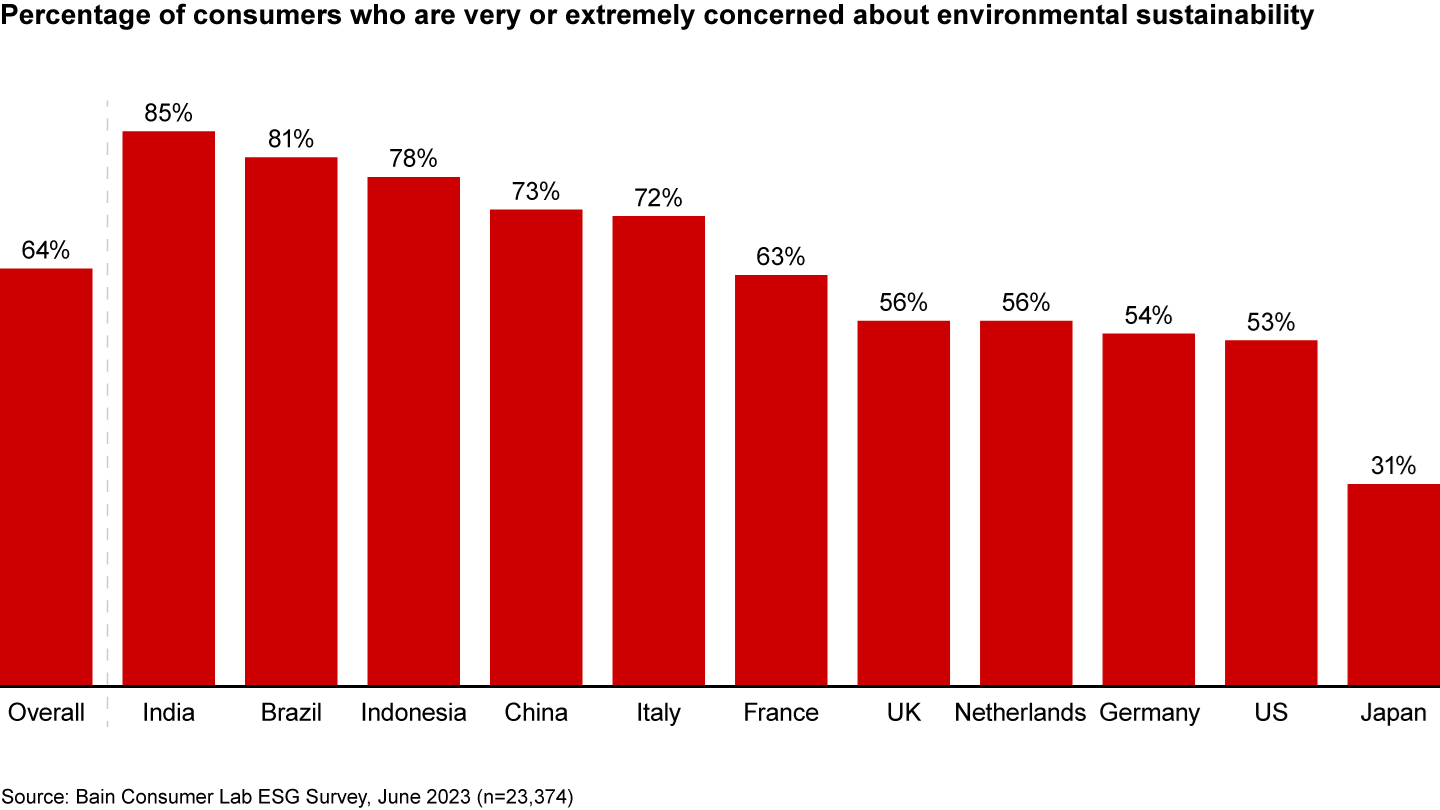
Many companies have long viewed younger consumers as more focused on sustainability than their older counterparts, but the reality is not as clear-cut. For example, 72% of Gen Z consumers and 68% of boomers globally are very or extremely concerned about the environment, but in countries as diverse as India, France, and Japan, boomers are more concerned.
In the US, 96% of consumers agree that the climate is changing. Among those concerned about the environment, 85% of self-described liberal voters are very or extremely concerned about climate change, compared with 39% of conservative voters. Yet conservatives worry about specific issues such as water, biodiversity loss, and air pollution relatively more than liberals, who worry more about climate change (see Figure 3).
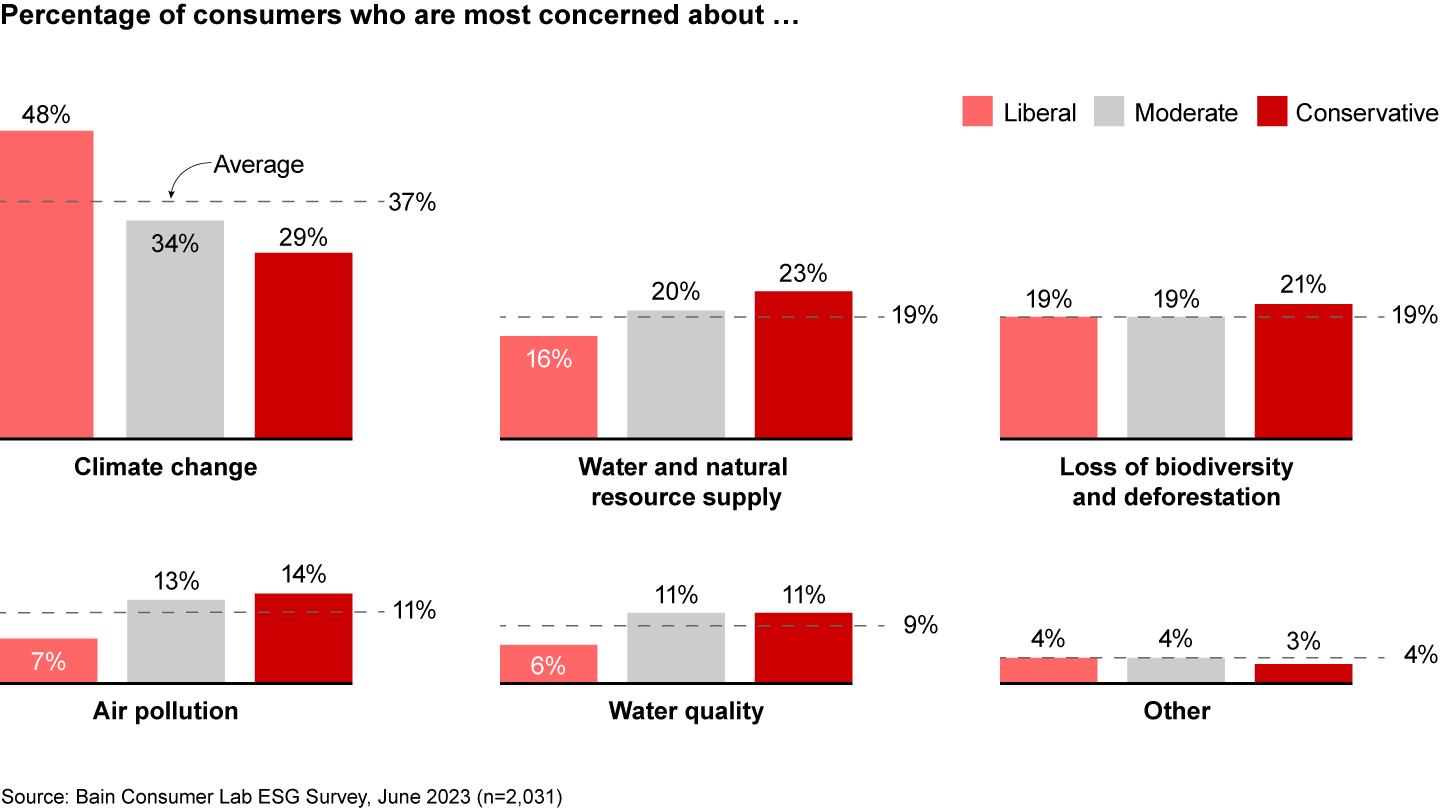
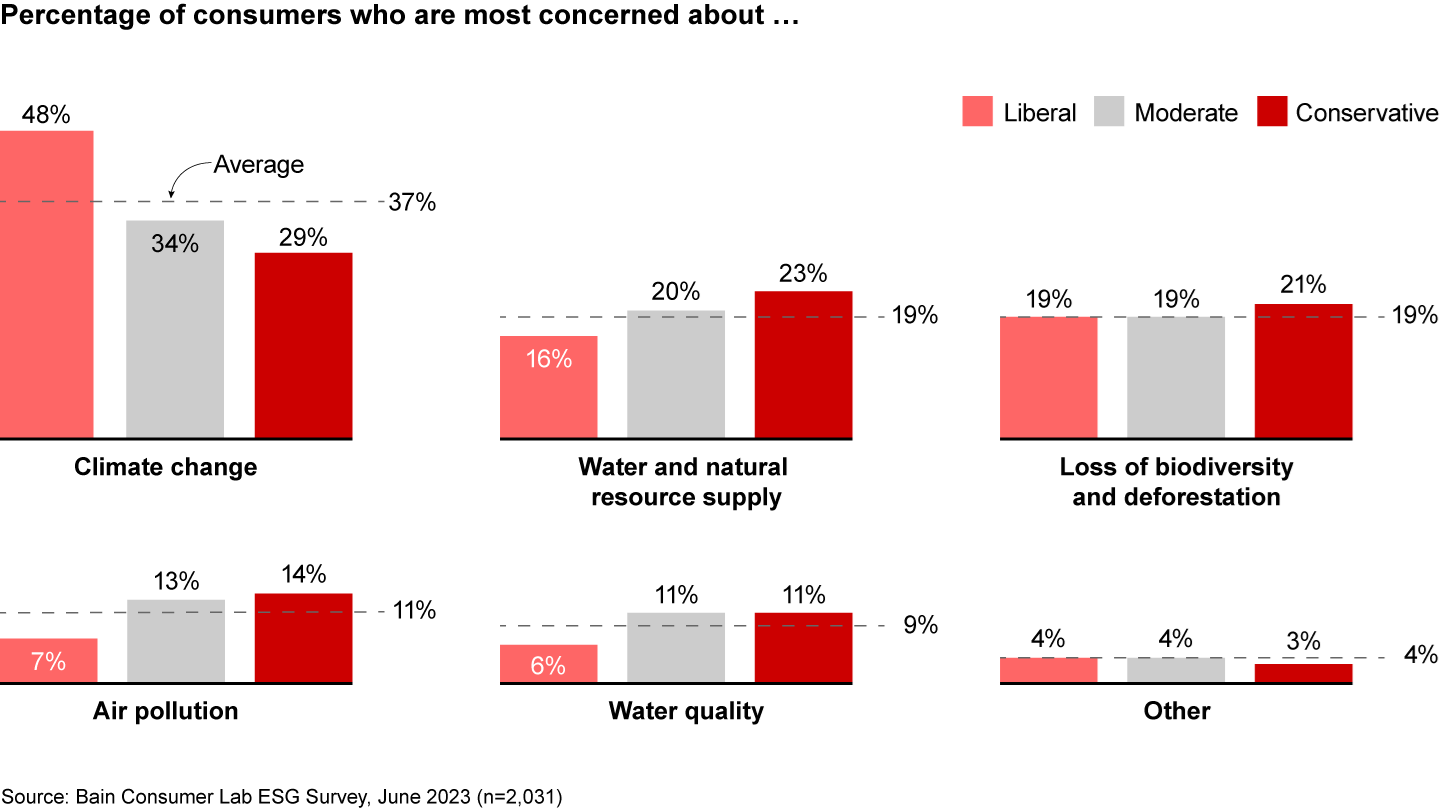
As those concerns grow, consumers are looking to make environmentally sound choices and are willing to pay more for sustainable products. Yet, they often run into barriers. For example, consumers in the US are willing to pay an average premium of 11% for products with a minimized environmental impact (see Figure 4). However, 28% is the average premium for products marketed as sustainable in the US.
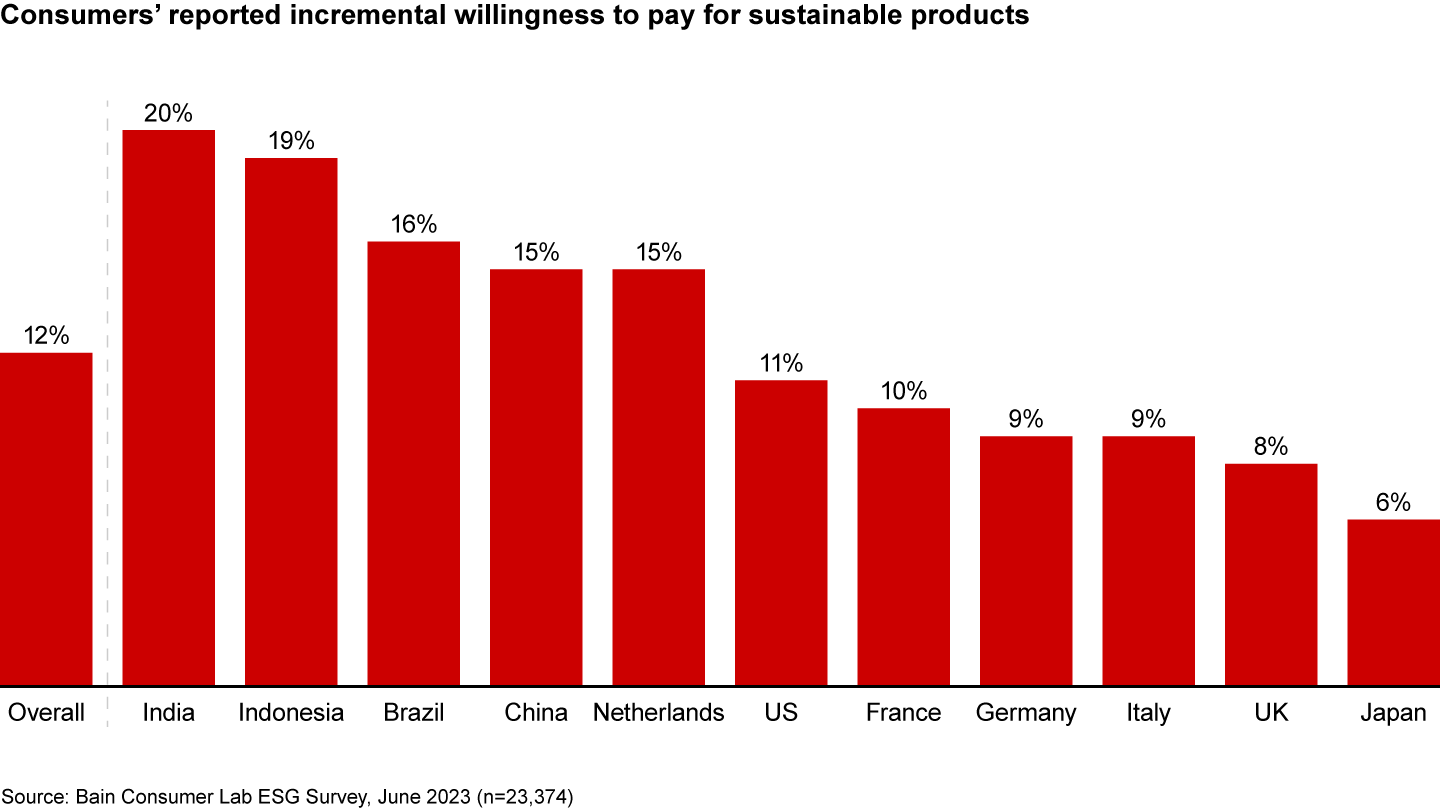
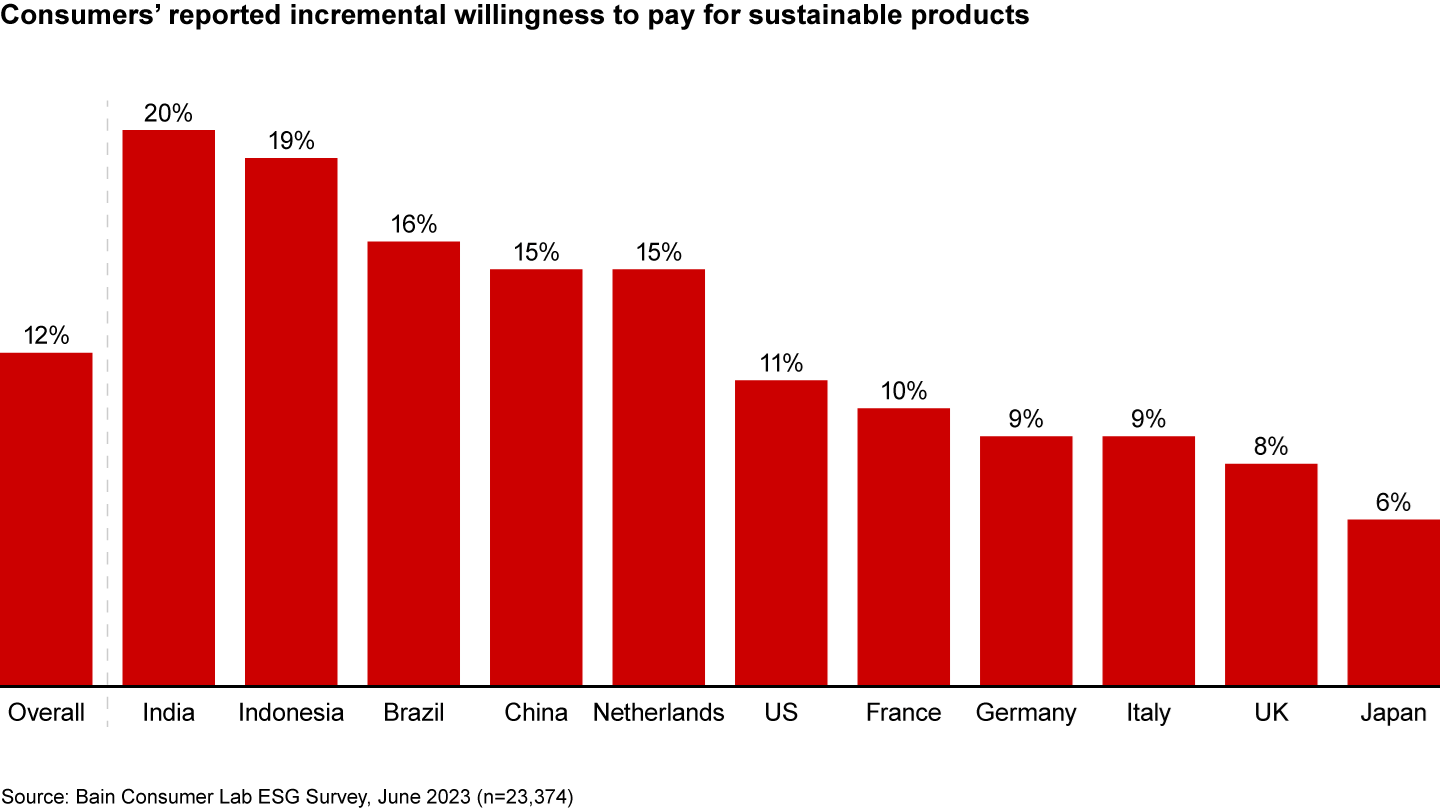
In our survey, 50% of consumers said sustainability is one of their top four key purchase criteria when shopping. Yet they may be making decisions based on misconceptions—significantly lowering the number of truly sustainable purchases. When asked to determine which of two given products generated higher carbon emissions, consumers were wrong or didn’t know about 75% of the time.
In addition to such “unknown unknowns,” consumers adopt different definitions of sustainability. Globally, 50% of consumers consider how products are used when thinking about sustainability. These consumers are more concerned about how a product can be reused, its durability, and how it will minimize waste. In contrast, most companies sell sustainable goods based on factors such as how they are made, their natural ingredients, and the farming practices deployed. These factors cause many consumers to conflate “sustainable” with “premium.”
One result of this disconnect: Almost half of all developed-market consumers believe that living sustainably is too expensive. By comparison, roughly 35% of consumers in fast-growing markets believe that it is.
Cultural norms and financial realities play a big role in consumer behaviors. In fast-growing markets, individuals can become more sustainable by going with the grain of society—by buying at local shops, generating less waste, and eating a traditionally plant-heavy diet, for example. In developed markets, embracing a sustainable lifestyle means going against the grain of a consumption culture by avoiding excessive purchasing as well as readily available and affordable conveniences.
Consumer behavior can change more quickly than many companies anticipate, with external factors such as government regulation heavily influencing the market. China began offering financial incentives on electric vehicles in 2009; now 19% of Chinese consumers report driving an electric car, compared with 8% of consumers globally. In England, the use of single-use supermarket plastic bags has fallen 98% since the government began requiring retailers to charge for them in 2015.

Ten Surprises from Our Sustainability Research
We surveyed more than 23,000 consumers globally about sustainability. Who’s most concerned, what they’re willing to pay, and what’s shifting behavior may surprise you.
What this means for companies
The momentum behind sustainability and dynamic shifts in consumer behavior have profound implications for any company. We see four critical areas of focus.
Devise a future-proof and flexible strategy. It’s undeniable that what’s important to consumers is changing faster than companies can keep up. Few companies plan beyond the typical 3-year strategic planning window, and even those that do look out 5 to 10 years tend to focus on expectations for technology adoption. These plans fail to fully consider two other factors that move just as rapidly and with as big an impact: regulations and consumer behavior.
Acknowledge a fragmented consumer base. Another lesson from our research points to the need to deaverage consumers. Traditional assumptions about consumers and sustainability no longer apply. For example, it’s wrong to assign more importance to developed markets and to younger consumers, or to assume that all consumers take the same approach to sustainability or define it the same way. Companies need to innovate products and design propositions that appeal to different segments—local markets, consumers with different definitions of sustainability, and consumers with a range of purchasing motivations. Only the most passionate consumers make sustainability their sole purchasing criterion. Most base their choices on a combination of factors, from price to convenience to how a product will fit into their lifestyle. The challenge for companies is to strategically align sustainability with the key purchase criteria of the category without forcing trade-offs.
And when selling sustainability to frugal consumers, companies need to think of ways to maintain touchpoints while offering them products that last longer or can be reused (in other words, selling them less of the product). Instead of simply selling a greener version of a product at a premium, companies need to take care of the rest of the equation, factoring in circularity, lifestyle, and economics.
Test and learn to determine what works—and repeat. In such a fluid environment, companies can lean aggressively on marketing experimentation, using digital tools to quickly test the sustainability messages that resonate with different segments and adapt accordingly. It’s a way to help consumers gain enough clarity to make decisions that are consistent with their values. For companies, experimentation reveals new data and insights at a deep, specific level, complementing traditional marketing research. Leaders in marketing experimentation often can prove or disprove a hypothesis within weeks. Once established at scale, a robust experimentation capability can enhance marketing-mix or econometric modeling and bring teams closer to their customers. It’s a recipe for both higher marketing ROI and stronger sales growth (see “Can Marketing Experimentation Become Your Superpower?”).
Get out in front of regulations. As we’ve seen throughout the world, government policy inevitably becomes a huge contributor to changing consumer behavior. Countries as diverse as Japan and Lithuania offer solar rebates. No fewer than 85 jurisdictions around the world have implemented a form of sugar tax. Across all industries, companies need to be at the forefront of helping to shape the regulations affecting their business. As global warming progresses, government intervention will grow bolder. A company’s ability to anticipate policy shifts and build future-proof portfolios will help determine whether it can outpace competitors.

The Global Consumer Lab
Develop a deeper understanding of your customers, beyond their shopping baskets.